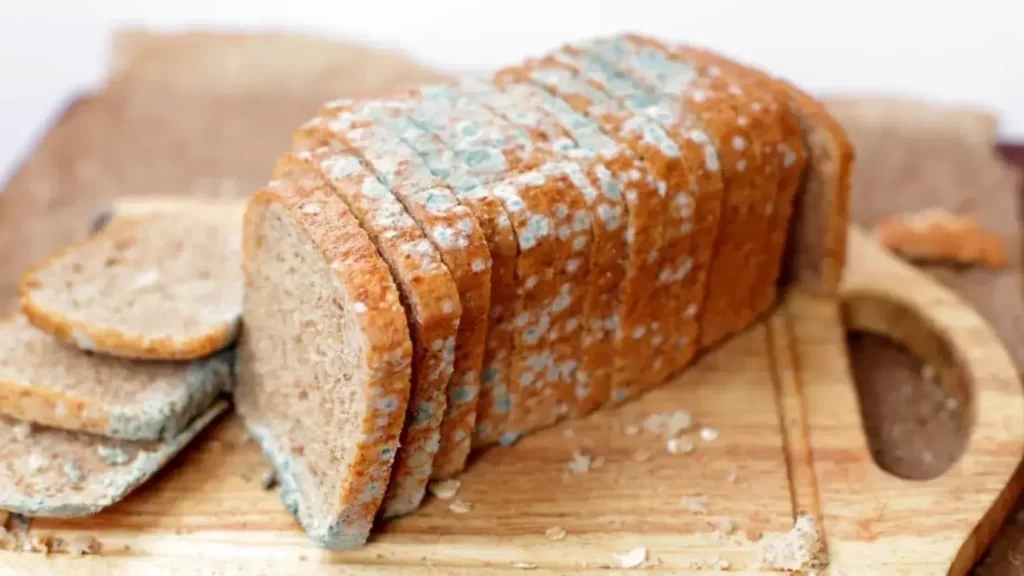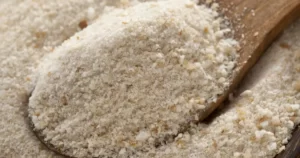Discovering how to keep bread from molding is essential for anyone who relishes the joy of a fresh loaf of bread.
Whether it’s for afternoon sandwiches, slathered with butter and homemade jam, or simply enjoyed with a cup of tea, bread is a staple in kitchens worldwide.
Unfortunately, the moisture that builds up in storage can cause mold to grow and develop, often leading to the heartache of having to throw away an entire loaf.
However, with the right techniques, it’s possible to guarantee a mold-free experience, allowing you to enjoy every slice of your freshly baked or supermarket-bought bread without worry.
Table of Contents
ToggleWhat Creates Mold?
Molds require a moist environment and a food source to thrive, making certain types of bread more susceptible.
For instance, unsliced bread tends to retain less moisture and may mold slower than others.
Paying attention to expiration dates can also help prevent mold growth, especially with softer kinds like banana bread.
1. Oxygen
Mold requires oxygen to survive, but cutting off its source can keep it at bay for longer.
2. Temperature
The temperature at which you store your bread affects mold growth. Warmer temperatures facilitate mold growth more quickly, while colder temperatures slow it down.
It’s important to ensure that bread is not left in a hot place that might encourage mold growth.
3. Time
Leaving bread uneaten for an extended period can give mold the opportunity to develop.
4. Humidity
High humidity environments are conducive to mold growth. Even if bread becomes moldy, toasting it can still make it enjoyable.
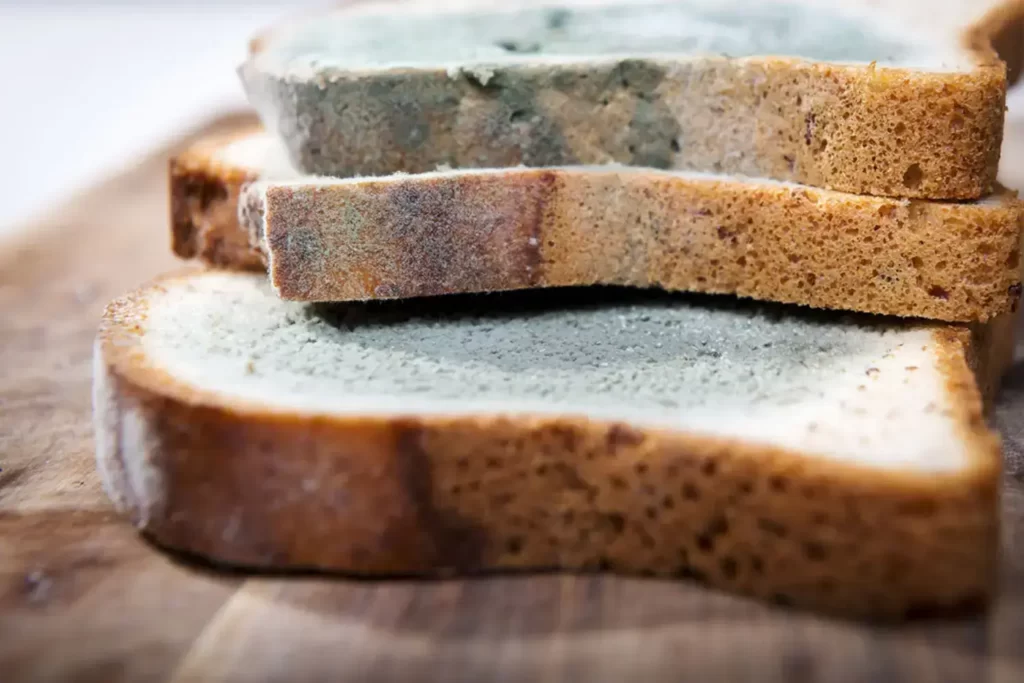
What Happens When You Consume Moldy Bread?
Mold spores can get up your nose if you even smell mold on bread. Inhaling spores is especially risky for people who have a mold allergy or a weakened immune system.
Some molds create dangerous yet imperceptible poisons known as mycotoxins. These poisons may cause an upset stomach, change gut microorganisms, and potentially increase cancer risk in the long run.
How To Keep Bread From Molding?
Here are the best ways to how to keep bread from molding celery.
1. Store Bread In Your Freezer
Storing bread in your freezer is a foolproof method to prevent molding. Before freezing, slice your unsliced loaf into individual slices for convenience.
Wrap the slices tightly in plastic or aluminum foil, then place them in thicker freezer bags to avoid freezer burn.
Properly stored and wrapped, bread can last up to three months without losing its fresh taste.
2. Bread Boxes
Using a bread box can significantly enhance the interior atmosphere of your kitchen while storing your bread to keep it from molding.
The box maintains the perfect balance of air circulation and humidity, keeping the bread soft and fresh.
However, limitations exist for bread enthusiasts with multiple varieties of bread, as too much humidity can build up.
Regardless of material, a bigger bread box can improve storage efficiency and kitchen décor.
3. Cloth Bread Bags
For those with limited kitchen room, cloth bread bags offer an airtight seal while allowing airflow, preventing the bread from drying out.
These bags are especially effective for white and French bread, keeping them fresh for up to two days without mold.
A trick for those on a budget: tea towels can perform the same job, eliminating the need to purchase a new product.
4. Brown Paper Bag
On a budget or find a separate bread container a hassle?
Brown paper bags, often used by bakeries, are an excellent method to keep hard-crusted, rustic breads fresh for up to two days. Keep the bag tightly closed and store it away from direct sunlight to prevent mold.
5. Use Beeswax Wrap
Beeswax wraps are a sustainable and budget-friendly option to keep your bread fresh and mold-free for days.
These wraps block air and moisture but don’t require special storage conditions like avoiding sun or cool places.
They protect the bread from all elements and are reusable, making them an excellent choice for those seeking sustainable options.

6. Store In Kitchen Cabinet
Storing bread in a kitchen cabinet offers a dry and large space with an airtight seal that promotes air circulation to prevent mold from developing.
Ensure the cabinet is empty of spices and other items whose fragrance might seep into the bread.
Pick a cabinet far from the fridge to avoid heat and humidity buildup.
7. Avoid Storing In Plastic
To avoid mold growth, keep bread out of sealed plastic bags, as these create optimal conditions for mold due to moisture and warmth.
Instead, store it unbagged or with the bag open on a dry countertop away from the sun, allowing air circulation that prevents mold.
8. Kitchen Drawer
A deep kitchen drawer can act like a cabinet, offering a cool, dry place to store rustic or artisan bread.
For best results, slice the bread and wrap it in a clean tea towel, placing the sliced end facing down to keep it fresh for two days.
9. Place The Bread In The Oven
An unused oven or microwave provides a cool, dry place to store bread loaves, free from scents and fragrant spices that might alter the flavor of your tasty bread.
Just remember not to turn on the oven with your precious bread inside.
10. Keep Bread Out Of The Fridge
Storing bread in the fridge can make it stale in just one day, accelerating the growth of mold and ruining its flavor and texture.
The starch in bread crystallizes, pulling moisture from the middle to the outer crust, leaving a dry, crumbly interior and a hard exterior.
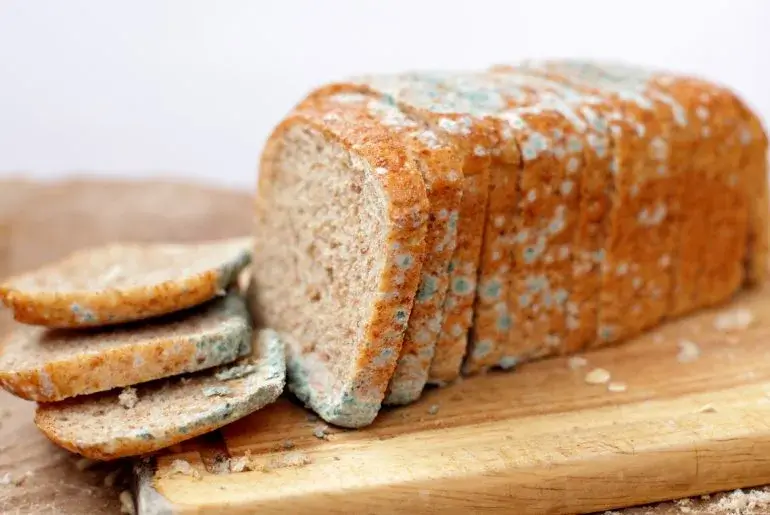
11. The Type Of Bread Matters
The type of bread you have can influence how quickly it becomes moldy.
French and white bread, with their softer crusts, are more susceptible to mold and staleness.
Conversely, darker breads like rye, sourdough, whole wheat, and whole grain are less prone to mold.
Proper storing methods can preserve their taste and texture for longer.
12. Avoid Pre-Sliced Bread
Opt for whole loaves over pre-sliced bread to keep bread fresh longer.
Pre-sliced bread’s fluffy interior is more exposed to air, making it more susceptible to mold and stale faster.
You’ll also have control over the thickness of your slices, perfect for any sandwich.
13. Slice Bread From The Middle
For those who prefer unsliced loaves, cutting bread from the middle rather than from the end keeps it fresh and mold-free longer by exposing less of the bread’s interior to air.
The crust remains intact, helping to preserve the loaf when you push it together before storing.
14. Reviving Stale Bread
Don’t throw away stale slices of bread. Revive them by placing in a warm oven for a few minutes.
Ensure you’re lining a baking tray with parchment paper to prevent sticking.
Five minutes is often enough to bring back that fresh taste.
15. Toast The Bread
When bread starts to feel stale, toasting it can give it new life.
Toasted bread, especially with a butter spread, can be a good meal any time of day—morning, noon, or night.
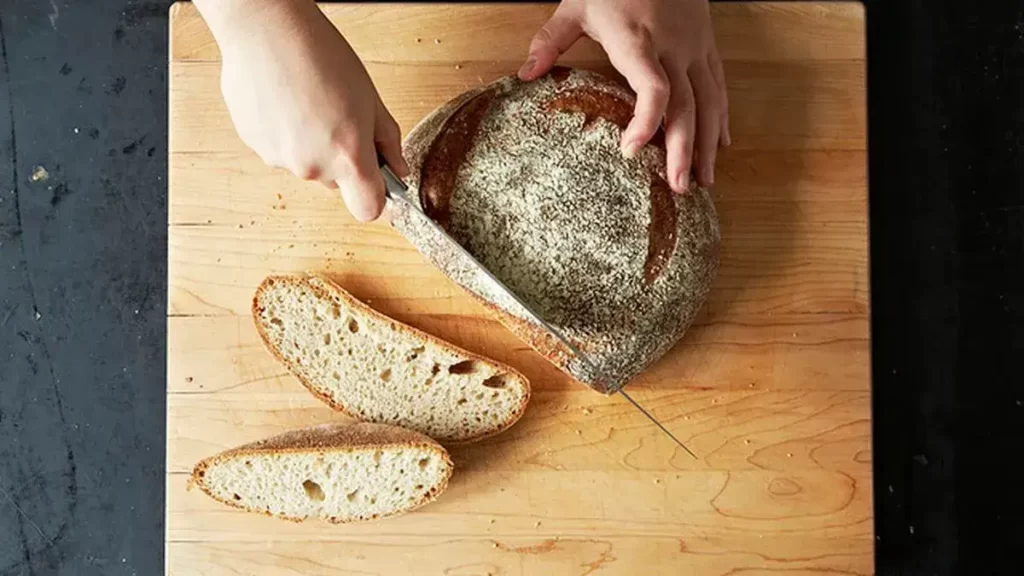
16. Play With The Recipe
Are you creating your own bread? Nothing beats a freshly baked loaf right out of the oven. Due to the lack of preservatives, homemade bread simply does not survive as long as store-bought bread. But that doesn’t mean you’re out of luck.
While many of the above guidelines will help you how to keep bread from molding, there is one specific secret I’d like to share with you: experiment with the recipe to discourage mold.
How? There are three options for doing so:
- Add more flour to make denser bread that makes mold growth difficult.
- To completely eliminate mold, use more acidic ingredients.
- Consider using a natural preservative like lecithin or lactic acid in your bread (cinnamon, garlic, and honey also work, but they will change the flavor of your bread).
Besides, once your bread has cooled and you’re ready to start slicing it, start in the center and work your way outwards.
Push the halves together once you’ve sliced out portion of the bread. This keeps the bread “intact” and prevents mold from growing on it.
How Long Does It Take For Mold To Grow On Bread?
Mold on bread can develop in as little as 24 hours, but it can also take up to ten days to grow. Mold spores emerge in most breads after 5 days.
The rate of mold growth on bread is also affected by the type of bread used. Rye bread, for example, will grow mold faster than whole wheat bread because rye has more sugar than whole wheat.
The temperature also influences how rapidly mold grows on bread. If it’s too chilly outside, the growth rate will be slower than if it’s too warm.
Another element that influences how quickly mold forms on a loaf of bread is humidity. If the humidity is high, the growth rate will be faster since there is more moisture in the air for mold to feed on.
FAQs About How To Keep Bread From Molding
1. What Is The Best Way To Store Bread So It Doesn’t Get Moldy?
A specialized bread box with the right interior air circulation and humidity can prevent moldiness.
2. Can You Refrigerate Bread To Prevent Mold Growth?
Refrigerating bread can stop mold from forming, but it’s not the best option as it guarantees stale bread. Reviving stale bread isn’t good, making freezer storage a better choice. Thaw it at night to toast in the morning.
3. Where Is The Best Place To Store Bread?
The best store for bread is in a box made of enamel, bamboo, or ceramic, enhancing your kitchen decor.
4. How Long Should Bread Last Before It Gets Moldy?
At room temperature, bread can last a few days before turning moldy. Freeze it, and it can last up to three months.
5. Why Does Bread Mold So Fast In My House?
Moist, mold spores love moisture, especially in conditions of heat and humidity where mold is more prone to flourish. Freshly baked bread in plastic goes stale faster.
6. How To Prevent Bread From Molding?
To save fresh bread longer, wrap it in plastic, use a reusable zip-top bag, or a bread box. Avoid damp, airy locations to speed up molding. Freeze if not eaten in two or three days.
7. Does Refrigerating Bread Prevent Mold?
Harold McGee, the author of On Food & Cooking, notes refrigerating makes fresh bread go stale up to six times faster than leaving it on the counter. However, for store-bought bread, the fridge can prevent dryness and mold.
8. Does Putting Bread In The Fridge Prevent Mold?
For those who consume bread slowly, especially in a warm and humid kitchen, and particularly if the bread is homemade, it’s worth refrigerating to prevent mold growth.
9. Does Bread Mold Faster In The Fridge?
To summarise the facts: storing bread inside the fridge prevents it from becoming mouldy but may make it go stale faster. Outside the fridge, bread might stay less stale but has a risk of growing mold and mildew.
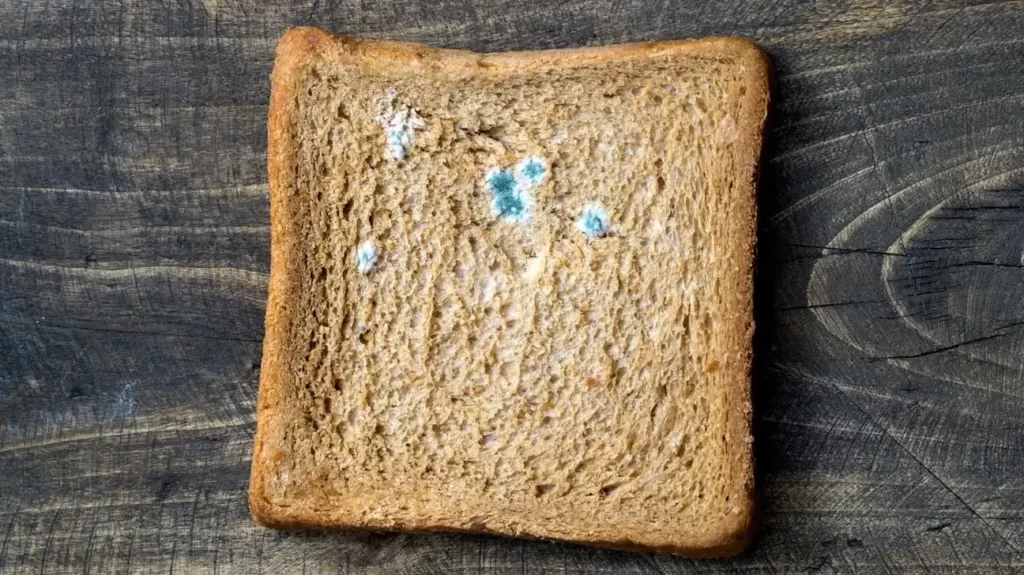
Conclusion
In conclusion, implementing effective methods can help prevent mold from spoiling your bread within just a day or two.
Whether it’s storing in specialized containers, using beeswax wraps, or opting for cloth bread bags, these techniques can keep your home-baked or purchased loaves fresh and tasty for days.
With these strategies in mind, you can ensure that your home always has fresh bread available, reducing the chances of it lasting only a couple of days.
This article has provided insights into how to keep bread from molding, ensuring your bread stays fresh longer.
You May Like To Read These Posts Too:
- Can You Put Cookie Dough In The Microwave
- How to Store Frosted Cupcakes Overnight
- How to Tell If Flour Has Gone Bad
- How To Store Zucchini Bread And Keep It Moist For Days
- How Long To Bake Potatoes At 375 In Foil
- How Long Does Zucchini Bread Last

